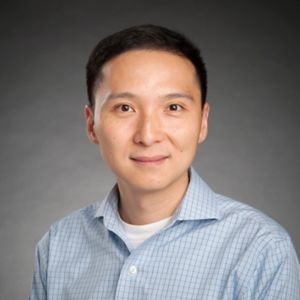St. Jude Family of Websites
Explore our cutting edge research, world-class patient care, career opportunities and more.
St. Jude Children's Research Hospital Home

- Fundraising
St. Jude Family of Websites
Explore our cutting edge research, world-class patient care, career opportunities and more.
St. Jude Children's Research Hospital Home

- Fundraising
ASH 2017: Research on TP53 gene variations featured in first ALL session
Jun J. Yang, PhD, highlights the initial ALL session at the 2017 annual meeting of the American Society of Hematology (ASH) in Atlanta, Georgia.
We are here at ASH presenting our work on TP53 and its association with secondary cancers in high-risk ALL. Around 1 percent of childhood acute lymphoblastic leukemia (ALL) cases may be related to a variation in the TP53 gene.
Maoxiang Qian, PhD, a postdoctoral fellow in my lab, presented our research at the first ALL session this morning at 7:30.
He presented data that showed variations of the TP53 gene are associated with an increased risk of poor treatment outcomes in these patients, including lower survival rate and a greater chance of developing a secondary cancer after therapy. We identified the gene after sequencing TP53 in nearly 4,000 children with ALL. Through that research, we identified 22 high-risk variants of the gene.
Children with these variants were more likely to be older when they were diagnosed and more likely to have a high-risk type of ALL called hypodiploid ALL. (Read Abstract 31.)
The findings suggest we should be extra mindful when it comes to the therapy given to these patients so we can lower their chances of secondary cancers. In addition to our research, there was quite a range of topics in this session, including toxicity, drug efficacy and disease susceptibility.
It was a great turnout. The room was packed at 7:30 this morning, hundreds of people attending this session, which is surprising because of the weather. We have several more days at ASH, and I look forward to collaborations and meeting colleagues during the meeting.






